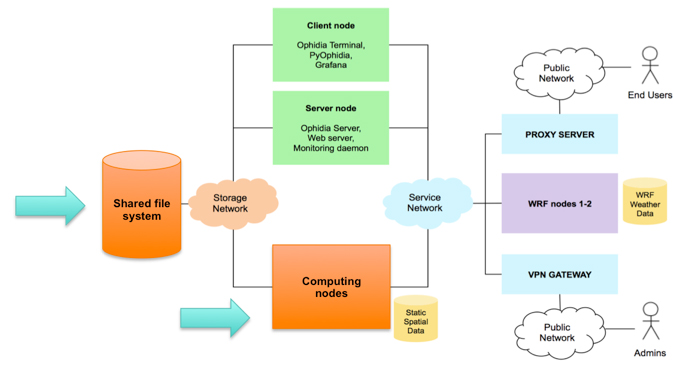The volume, complexity and variety of data produced in OFIDIA2 need specific solutions able to manage large datasets and to take advantage of parallel processing so as to deliver results in (near) real-time. Understanding big data is a challenging task due to the 5Vs feature (volume, variety, velocity, veracity and value) and the extraction of valuable information requires adequate knowledge of how to use the data as well as the techniques/methods for data collection.
In the OFIDIA2 project, a big data analytics framework has been developed. It handles two different kinds of data: forecasts and observations. The first are related to the output of the WRF model. A new configuration of the WRF model is up and running in a semi-operational mode. It consists of two geographical domains nested in 2-way mode. The coarse domain covers the Central Mediterranean region with 6 km as horizontal resolution, whereas the inner domain is over Southern Italy with a 2km horizontal resolution. The WRF output is used as input for three fire danger indices/maps over the Apulia Region (Italy). In particular, the following fire danger indicators are considered:
-
Canadian Fire Weather Index (CFWI) (van Wagner and Pickett 1985; van Wagner 1987)
-
Fosberg Fire Weather Index (FFWI) (Fosberg 1978; Goodrick 2002)
-
Ichnusa Fire Index (IFI) (Spano et al. 2003; Sirca et al. 2006; 2007)
These indices are calculated by using the workflow capabilities and the parallel operators provided by the big data analytics framework developed and set up in the OFIDIA2 project. As of today, the framework is running over a 100 cores fat-nodes cluster at the CMCC SuperComputing Centre.
Big Data Management Platform










